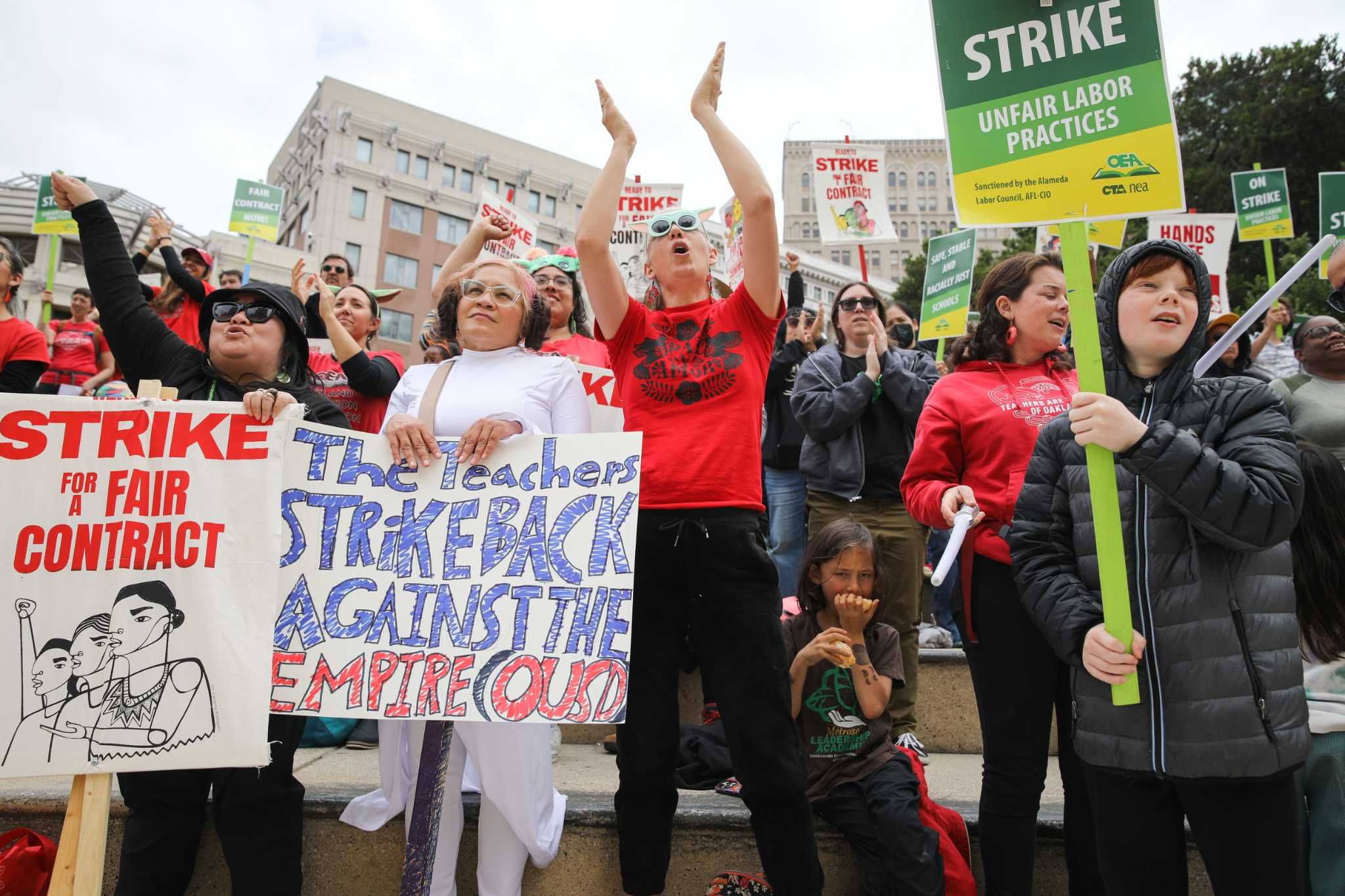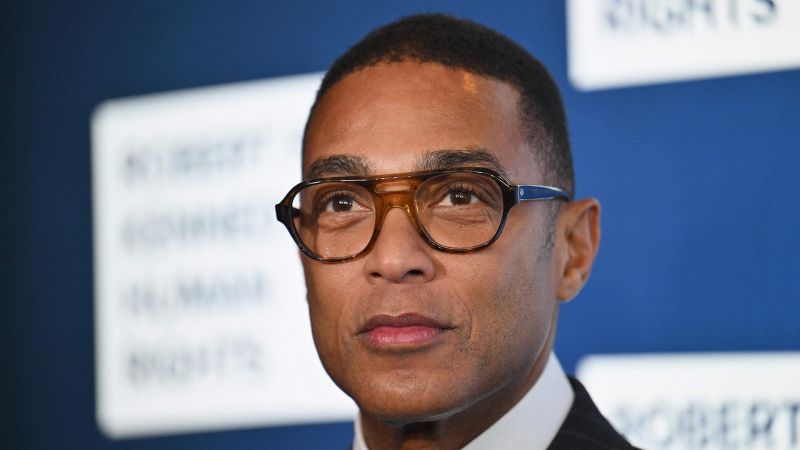Negotiations continue over salary schedule
This is a carousel. Use Next and Previous buttons to navigate
Oakland teachers took to the picket lines Thursday morning for the first day of an open-ended strike over salaries, class sizes and a long list of demands not usually part of negotiations such as housing for homeless children, reparations for Black students, and the kinds of trees used in landscaping.
All bargaining had ceased with labor leaders refusing to return to the table until the district provided a comprehensive proposal on all mandatory contract items as well as those that are allowed, but not required, including a specific policy and process for school closures, transportation for all 34,000 students, landscaping and reparations.
Neither side would venture a guess on how long the strike would last. There are three weeks of school left before the summer break.
Oakland Education Association interim President Ismael Armendariz said the union will not stop demanding important services for students, including additional reparation resources for Black students, mental health services and more. It’s up to the district, he said, to return to the table ready to negotiate on all topics the union has proposed.
Juliana Yamada/The Chronicle
District officials said late Thursday morning that the school board has restricted bargaining to mandatory topics in an effort to prioritize salaries and compensation for teachers. Both sides agreed they were very close on pay and benefits, but it was the optional “common good” proposals that were keeping an agreement from happening.
The school board has not authorized its negotiators to discuss topics outside those required by law, officials said.
Superintendent Kyla Johnson-Trammell said the district’s compensation offer, including a 13% to $20% raise for all teachers and at least 10% for other members of the union, would cost $70 million. The goal she said was to retain teachers, giving them the largest increase ever, while ensuring they reach the top of the pay scale in 20 years rather than the current 32 years.
“There is very little remaining in resources to address other issues,” she said. “We simply can’t do everything.”
The strike is based on the union’s claim of unfair labor practices related to what they say is the district bargaining in bad faith. The state labor board has not yet ruled on that claim. Typically, strikes only occur after a state-mandated process that includes impasse, fact-finding and mediation.
State Superintendent of Public Instruction Tony Thurmond offered Thursday to help spur an agreement by formally mediating bargaining between the two sides. He appeared to dispute union officials who said that the district had not been bargaining in good faith in recent days.
“We observed how hard both sides worked and will start immediately working with the parties in a formal mediation capacity,” Thurmond said in a statement. “Our goal is to help the parties reach an agreement and to end the strike so that students can return to class as quickly as possible.”
Oakland education advocate Lakisha Young, who runs Oakland Reach supporting low-income kids of color, tweeted that she wanted to know why teachers continued to strike over issues that usually have little to do with bargaining.
Juliana Yamada/The Chronicle
“So can someone tell me specifically why our kids are out of school today?” she wrote, questioning whether it still had to do with compensation. “So are our kids out of school because of drought-tolerant shrubbery? … Are our kids out of school — hurting Black and brown kids the most — in the name of … reparations and racial justice?! Does anyone else see the irony here?”
During a morning news conference, school board President Mike Hutchinson said he was also not clear on why the union left the table given the very near agreement on salary.
“They’ve left the table and broken off discussions, not us,” he said, adding the two sides could work together on common good proposals outside negotiations, but issues like the use of school buildings for housing should not be in a contract with one of the district’s six labor groups.
Union leaders held a midday rally in front of City Hall, but emphasized they wanted the district to pony up for not only pay, but all the other issues.
Armendariz said during the rally that district officials should expect resistance if they don’t “fulfill the urgent needs of students and teachers,” including the optional common good items.
Juliana Yamada/The Chronicle
He said a lot of people have been asking why the union is bargaining for common good issues. “What is common good, they ask. Why are you bargaining for common good? We’re bargaining for common good because that’s what our students need.”
Armendariz said that he has been told that the district has a proposal to present Friday, but he hasn’t seen it. The committee will need to look it over and decide what comes next.
“We are going back to the table and we are going to fight like hell,” he said.
In the meantime, teachers and parents are expected to continue to line sidewalks in front of school sites, carrying picket signs to call for better wages and working conditions.
On Thursday, Traci Grizzle, a special education teacher and strike coordinator at Sankofa Elementary, was among those carrying signs and leading chants as passing cars honked. Money, she said, was the biggest issue.
“Why do teachers need to leave their classrooms to get what they need?” she said. “We can’t hire teachers. They go to other districts. They look at our starting pay and say no.”
Juliana Yamada/The Chronicle
She said she hoped the strike would not last long, but that it would send a message not only to district officials but to state leaders, who need to rethink how they fund education, she said.
“I do not take striking lightly,” Grizzle added. “I love my class.”
Schools across the district would remain open to students during the strike, with site and central office administrators staffing them for any students who showed up.
At Sankofa, principal Dennis Guikema welcomed a handful of students who trickled in Thursday morning, saying that while most families are able to pull their students out of school to support teachers, not everyone can. He had a full schedule planned for students for the days of the strike, including circle time, learning time in classrooms, art, physical education and meal times.
Guikema said they would start with a group meeting, explaining to students what a strike is and help them understand that though some adults are inside and some are outside, they all care about the students.
Juliana Yamada/The Chronicle
“It’s certainly not a situation any of us want to be in,” he said.
At Montera Middle School in the Oakland hills, where about 40 teachers blocked entrances, just two of the 700 students had shown up, said Jennifer Ribach, a math and science teacher and union representative.
“That includes one whose parent came to the picket line in tears, saying she couldn’t find child care and promising her daughter wouldn’t be in class tomorrow,” Ribach said.
Back at Sankofa Elementary, parent Shantee Wilson dropped her daughter, a second-grader, just after 8 a.m., saying that while she wanted to support the teachers, she had no choice. She had to get to her job as a preschool teacher, and there were no other child care options.
“It saddens me it had to come to this,” she said, adding her daughter was confused to see her teachers outside the school. “I’m trying to explain to an 8-year-old what’s happening.”
Juliana Yamada/The Chronicle
During the last Oakland teachers strike in 2019, very few families sent their children to schools. In many cases they kept kids home in support of teachers, but also because they knew there would be no instruction. Still, a significant number of parents had to find alternative child care, use vacation time or take unpaid time off to keep their kids home.
That strike lasted seven days.
During the current negotiations, union officials have demanded a 23% raise for all members of the bargaining unit. District officials had offered up to a 22% raise, but not for all 3,000 educators. They have also tied a 10% retroactive raise to more instructional minutes for elementary school students.
The district’s offer also included paying 15% more for health benefits, in addition to required pensions costs equaling more than 19% of salaries.
District officials said in a statement Wednesday that all members of the union would get a 13% to 22% raise, as well as a one-time bonus and back pay.
Under the proposal, according to the district Wednesday, beginning teachers would get a $10,700 raise, plus $8,700 in back pay and one-time bonus. Veteran teachers would see an annual increase of $15,432, plus $11,600 in back pay and one-time bonus.
Other union members, including counselors, psychologists and nurses, would also get increases in salary.
Juliana Yamada/The Chronicle
While teachers have pointed to significant funding in district coffers remaining in one-time pandemic recovery funding, that money can’t sustain future salary increases and other costs. County and state officials have noted that one-time funds aren’t enough to pay for ongoing cost increases and warned the district that even without raising teacher pay, it’s on track to reach insolvency without significant budget adjustments.
At United for Success Academy, teachers and other union members gathered in front of the school were not focused on those details, but rather on the cars honking and the chants of support.
“Stand up, sit down, Oakland is a union town,” about 20 picketing teachers yelled.
Behind them, the campus, which houses middle school and some high school students, appeared empty, with lights on in the school gym but no signs of activity.
“Hopefully it’s only a one-day strike and OUSD figures it out,” said Michael Aponte, who teaches special education at Life Academy. “But we’re ready to stay out as long as it takes.”
Source: San Francisco Chronicle


